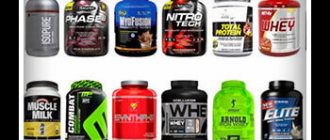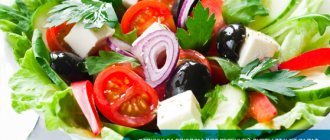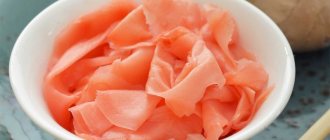- The use of milk powder in bodybuilding
- Advantages
- Flaws
- When and how to drink
- Popular myths about milk powder
- Difference between protein and milk powder
- Other high protein foods
The use of milk powder in bodybuilding
It is no secret that athletes need a complex of certain substances, from which the construction of both individual cells and entire groups of tissues directly occurs. One of the most popular among them is protein.
To compensate for the deficiency of this substance, athletes most often use concentrates of dairy products, including milk powder.
Did you know? A product such as milk powder has been known to mankind since ancient times. Another famous traveler Marco Polo wrote about a paste-like dairy product made from sun-dried milk raw materials, which the Mongol-Tatars used as food during long campaigns.
The milk concentrate contains almost the entire list of the most important amino acids for athletes, as well as vitamins and microelements. Thanks to this, its daily use can improve well-being and athletic performance.
But, despite this, the product differs not only in its advantages, but also has quite serious disadvantages.
Milk in the diet of an ectomorph
For an ectomorph (hard gainer) who cannot achieve the desired weight, milk may well be the key to achieving results. This is a well-tested method that relies on including milk in your diet. And turning it on in a big way!
Allows you to achieve truly decent results in a fairly short time. Naturally, you achieve the effect only in combination with a healthy diet and hard work in the gym. And maybe even with the addition of sports supplements such as creatine .
To stimulate muscle growth, it is important to aim for 2 grams of protein per 1 kg of body weight per day . From a financial point of view, as well as physiologically, this can be quite difficult for some. Especially for those who, no matter how hard they try, simply cannot eat enough food to achieve a high daily calorie count.
After all, if gaining muscle mass was a piece of cake, you wouldn't be reading this article. If you want to get bigger, then you should consume the same number of calories that the average person consumes at the weight you want to achieve.
For example, if you want to weigh 90 kg, then the average 90 kg person should consume 2700 kcal per day. Let's say this is your goal, but you feel full during the day and can only handle 1700-2000 kcal. Many people face this problem. You count calories (which is critical!) and decide that you need to drink what you can't eat . Approximately 950 additional calories. It is easy to calculate that this is approximately equal to one and a half liters of whole milk or 6 glasses of milk. Quite an achievable goal!
You continue to eat as much as you can at each meal. And when you can no longer eat, milk comes into play, since most people can drink even after the onset of a feeling of satiety and fullness. To supplement the total calorie content, you can drink milk with every meal, and quite often, when there is no time to eat, you can resort to it to quickly nourish the body and not lead to hunger.
Advantages
The main advantages of this mixture in bodybuilding:
- high digestibility;
- contains all the amino acids necessary for athletes;
- promotes rapid weight gain;
- One serving contains the daily requirement of vitamin B;
- low price;
- does not require heat treatment before use;
- can be used by athletes with diabetes and chronic diseases of the digestive system.
What can you make from egg powder?
Due to better foaming and the ability to retain sugar well, the powdered product is actively used in the manufacture of creams, meringues, meringues, mousses, soufflés, desserts, cakes and pastries. Using egg powder instead of eggs is beneficial when it is necessary to speed up the production process, reduce energy and labor costs, and also increase the sanitary level of production. At home, dry concentrate can also be used in various dishes and baked goods.
Cooking an omelet
To prepare an omelet you will need:
- 1 tbsp. spoon of powder;
- 1/3 cup milk;
- 10 g butter.
In milk that has been boiled and cooled to 50°C, it is necessary to dilute the dry egg melange, adding it in small portions, and leave it to swell for half an hour. After this, the mixture can be poured onto a heated and oiled frying pan.
Fans of desserts based on French meringue will also like the use of dried egg whites. Many recipes are prepared without heat treatment, so fresh eggs can be a source of salmonella contamination, which is excluded when using powder.
Flaws
Among the product's disadvantages, the most important for athletes are:
- low percentage of proteins in the total mass (in relation to other sports nutrition);
- increased content of lactose - one of the main allergens;
- high fat content;
- the need for special storage conditions;
- a huge number of various side impurities, relative to the main substances.
Did you know? A modern analogue of powdered concentrates of dairy products was first obtained in 1802 by the Russian scientist and doctor Osip Krichevsky.
When and how to drink
Athletes take milk powder as an additional source of protein for muscle growth or weight gain before competitions. To achieve the optimal effect, the amount of protein consumed with the product at one time should be about 30 g.
Therefore, a serving of a protein shake should be based on at least 100 g of powder. A large concentration of pure protein is not harmful to the body, but it will not cause any additional effect. If you are preparing a complex mixture of different proteins, then the concentration of milk powder is reduced.
The cocktail is often taken three times a day, morning and afternoon. In the evening and at night, powdered milk is not recommended, as excess fat in its composition will negatively affect the appearance of the body. Drink it in between main meals.
On the day of training, one of these cocktails should be consumed immediately after training in the gym, this will help to instantly saturate the body with the substances necessary for the post-workout period.
During preparation, the product is thoroughly mixed with water, yogurt, kefir or other liquids. If you want to reduce the calorie content of the cocktail, you should prepare it with water, without any additives or sweeteners.
The mixture can also be used as an additional ingredient for all kinds of dishes (milk porridges, desserts, etc.) or drinks (coffee, yogurt, etc.), as a milk substitute.
Important! The protein shake
should not contain lumps, so you need to use a blender or food processor to prepare it.
A little about protein shakes
Before considering the schedule for taking protein shakes, it should be noted that they are an addition to the diet and should not completely replace existing meals.
There are certain conditions for their acceptance:
- The temperature of the finished cocktail should be 36-37 degrees Celsius, since at higher temperatures the main component, the protein, is destroyed.
- According to physiologists, the optimal volume of a single dose should not exceed 300 ml.
- The most important point is the choice of products for a protein shake. Use those components to which you will not have an allergic reaction.
- Experiment with products, the resulting cocktail should bring you pleasure!
Popular myths about milk powder
Despite the fact that milk concentrate has been actively used by humanity for many decades, this product has acquired many legends and stereotypes during its use.
The largest number of them is observed in the field of sports, which often does not have a positive effect on its popularization, even despite the fairly low price, therefore, before including this product in your diet, you should definitely understand what it really is.
Learn about the benefits and harms of amino acids for muscle growth.
The most common controversial statements about milk powder:
- it leads to the formation of cholesterol in the blood. As you know, this product actually contains the most harmful, oxidized form of cholesterol, but today skimmed forms of milk are often used for production purposes, so their final concentration is not quite high. In addition, enriching your diet with fresh fruits and vegetables while drinking protein shakes will help you completely protect yourself from cholesterol;
- the product necessarily leads to obesity in athletes. Powdered milk does have a fairly high fat content compared to other sports nutrition, but this figure is 20–30% less than that of fresh milk, so when consumed in moderation, the mixture does not cause fat accumulation;
- industrially produced food is not natural. The production of this mixture is based exclusively on the use of natural milk, and the components contained in its composition cannot be reproduced artificially. In addition, a liquid lyophilization line is much cheaper and more cost-effective than a complex organic synthesis laboratory;
- powdered mixtures may contain harmful vegetable fats. In fact, in many food products, manufacturers replace expensive animal fats with cheaper plant fats. And powdered milk is no exception. You should be afraid of this only if you deliberately purchase mixtures with a high concentration of fats; the bulk of concentrates contain less of them, even than whole milk;
- Powdered food contains preservatives. It is not advisable to use these compounds to increase the shelf life of the product, since its production involves the elimination of the main condition for the development of pathogenic bacteria - available moisture;
- When using a protein mixture, you can refuse to consume plant proteins. This type of nutrition is not comprehensive; during active sports, the body definitely needs meat, since it contains many amino acids that are not available from other foods.
Composition of milk
1 cup (250 ml) of whole milk contains 8 grams of protein, 13 grams of carbohydrates, 8 grams of fat and 150 calories. As well as 290 mg of calcium and 107 mg of sodium. This combination makes it an ideal product for muscle gain and recovery. Full composition:
Casein
Slowly digesting protein. Milk consists of 80% casein - a milk protein that maintains a feeling of fullness longer, helps get rid of excess fat in the body and restore muscle tissue.
Serum
Fast digesting protein. Milk consists of 20% whey protein, the same protein found in protein shakes to quickly saturate muscles.
BCAAs
Dairy products are rich in branched chain amino acids: leucine, isoleucine, valine. A protein-rich dairy diet contains sufficient BCAAs. There is no need to spend money on supplements.
Carbohydrates
Our body uses the lactose contained in milk to replenish energy reserves. Although some people are not able to digest it. Therefore, it is recommended to take lactase tablets (Lactazar) if you experience bloating and loose stools after eating dairy products. In turn, consuming lactose-free milk is more convenient, but much more expensive.
Fats
Fat content is 1-3 grams per 100 ml, unless of course you consume skim milk. They are digested slowly and maintain a feeling of fullness for a long time, reducing the feeling of hunger.
Calcium
Milk calcium accelerates the fat burning process and promotes bone health. The latter is especially important for the fair half of humanity (osteoporosis).
Water
Milk contains about 87% water. Adequate hydration improves muscle recovery and can increase strength by preventing fatigue and stagnation.
Electrolytes
Sodium and potassium contribute to better replenishment of lost fluid in the post-training period by retaining water in the body's cells.
Nutrients
Biotin, magnesium, vitamin A, vitamin B 12, vitamin D, vitamin K, riboflavin and many others.
Difference between protein and milk powder
Many aspiring bodybuilders, when developing a protein diet, have a question about whether it is worth replacing expensive sports proteins with regular milk concentrate from the grocery store.
Did you know? The process of industrial production of powdered milk was first organized in 1832 by the Russian chemist M. Dierhoff.
As you know, they are almost identical in appearance, but at the same time they have quite serious differences. They consist not only in price, but also in the composition of the substances.
Proteins in sports often refer to whey protein concentrates made from whey, a derivative of lactic acid fermentation and cheese making. This mixture is distinguished by a huge concentration of fast proteins (about 90–95% of the total mass), which can instantly be involved in all kinds of metabolic processes.
Whey protein contains practically no lactose and fat, so it can be used even for allergic reactions to lactic acid products, as well as for a comprehensive weight loss program.
Find out whether proteins are harmful to health and how they affect the body, and how to drink protein correctly.
In turn, milk powder is an unrefined concentrate of all kinds of proteins and other substances. In addition to fast whey protein, the mixture also includes slow protein isolates (caseins, etc.), as well as a huge amount of calcium and vitamins.
Moreover, the amount of pure protein in such a product often does not exceed 70% of the total mass. The inclusion of cocktails based on such mixtures in the diet contributes to a general increase in body weight, but is not able to have the most effective effect on muscle growth.
In addition, unrefined milk powders are always significantly cheaper than pure isolates of certain proteins. There are many reasons for this, but often this is influenced not only by technological features, but also by the cost of production raw materials.
Important! High-quality powdered milk should be white or slightly yellowish in color, uniform in consistency, and also have a pleasant, specific smell.
Other characteristics of the mixture indicate counterfeit or non-compliance with storage conditions, which can lead to poisoning.
Recommendations for burning fat
To lose weight, we need to eat fewer calories or burn more. Dairy fat will not make us fat. And in general, we won’t get fat from any food if we have a calorie deficit. Just like any food, including protein, can lead to the accumulation of fat mass if there is an excess of calories. In other words: it is not fat that makes us fat, but excess calories. With a general calorie deficit, it doesn't matter whether you drink whole or skim milk . Thus, what kind of milk you will drink in the post-training period depends entirely on the energy needs of the body, that is, it mainly depends on your weight. For example, if you weigh 80 kg, then you need not to exceed 2400 kcal per day in order to lose weight. A liter of milk after your workout will mean you have 1800 kcal left over for the rest of the day. If your weight is about 100 kg, then to lose fat you should not exceed 3000 kilocalories during the day. In this case, 1 liter will mean that you have another 2400 kcal left for the rest of the day. In other words, if you are trying to lose weight you have two options:
- Drink smaller amounts of whole milk: one mug contains 150 kilocalories, and two mugs contain 300 kilocalories.
- Drinking milk with 1% fat content - one liter contains 370 kilocalories, and two mugs - 185 kilocalories. It all depends on your energy needs for weight loss. And 1% fat is preferable to low fat because the difference in calories is negligible. 1% fat milk contains only 90 kcal more per liter than skim milk and only 45 kcal more if you drink two cups. Insignificant difference.
Other high protein foods
If you are not yet ready to switch to concentrated sports nutrition, you can meet the body’s protein needs with a balanced protein diet. It is based on the consumption of available products from the nearest grocery store.
Leading high protein foods:
| Product | Quantity per 100 g |
| Chicken (breast) | 29 |
| Beef | 28 |
| Mutton | 26 |
| Mozzarella cheese | 26 |
| Lentils | 25 |
| Shrimps | 23 |
| Cod fillet | 21 |
| Squid | 20 |
| Tofu cheese | 16 |
| Buckwheat | 13 |
| Chicken eggs | 12 |
| Peas and beans | 6 |
Powdered milk today is undeservedly ignored by athletes. But, despite this, it makes it possible to instantly and without spending extra money saturate the body with important amino acids, vitamins and calcium, without which it is difficult to imagine the healthy development of muscles and the body.
However, during “drying” milk powders are pointless, since they contain a huge amount of organic impurities that negatively affect weight loss.
Sports and fitness Nutrition during training To gain muscle mass
Comparison with serum
Many people believe that they need serum after a workout. Maybe because the manufacturing companies insist on it. But most studies show that it is “slow” or a mixture of “slow” and “fast” protein that is most effective for gaining lean muscle mass. Whey is a “fast” protein. While milk is a mixture of slow and fast digesting proteins, it is therefore more effective than whey and soy milk, which contain only “fast” proteins. Meat, poultry or fish are also more effective than whey. It's not surprising that many people successfully eat nutritious meals after workouts.











